Semester 48: 2nd Expedition
Written by: Hugo, Charlie, Beatty, Alden, & Annie Grace
Group A: I can confidently say that the Second Expedition of the HMI Spring Semester was one of, if not the most, unique experience that every student currently at HMI has gone through. Second Expedition consisted of backcountry telemark skiing, building quigloos, pulling sleds, cooking outside, and completing schoolwork. For this blog post, I am going to focus on my two favorite aspects of the trip: backcountry telemark skiing and building quigloos. Telemark skiing has been one of the most enjoyable new skills I have learned at HMI. Telemark skiing is very similar to alpine skiing, but it has one big difference. The bindings do not have a mechanism that clips to the heel of your ski boot, which leaves your heel free to pivot up and down. A telemark turn consists of dropping your uphill knee towards the snow, in a kneeling motion. Many HMI students have definitely embodied the quote “free the heel, free the mind.” On this expedition, telemark skiing was a great resource because it made walking uphill easier. We used our skis everytime we traveled outside of our walking paths in camp. A few of the expedition groups went on a “ski tour”. This is when you go uphill with the intention of skiing back down the elevation that you gained. Although you get much less skiing time than if you were at a resort, each turn feels that much better because you earned it. Also, the untouched powder is quite a joy to ski in. Telemark skiing allowed us to reach the locations where we built our quigloos in the backcountry. A quigloo is a snow structure that is hollowed out. First, we piled up a mound of snow large enough to fit roughly four people. Then we let the mound sit overnight which allowed for the structural integrity of the snow pile to increase. The next day we began the process of hollowing out the mound. Although very laborious, it was fascinating to watch our homes slowly grow bigger and bigger. Once fully hollowed out, quigloos provided a wind free, relatively warm home. Even when the temperature was in the negatives on expedition, the inside of the quigloos stayed at a consistent 25-32 degrees Fahrenheit. The simplicity of life and the beautiful views on the second expedition provided for a marvelous ten days.
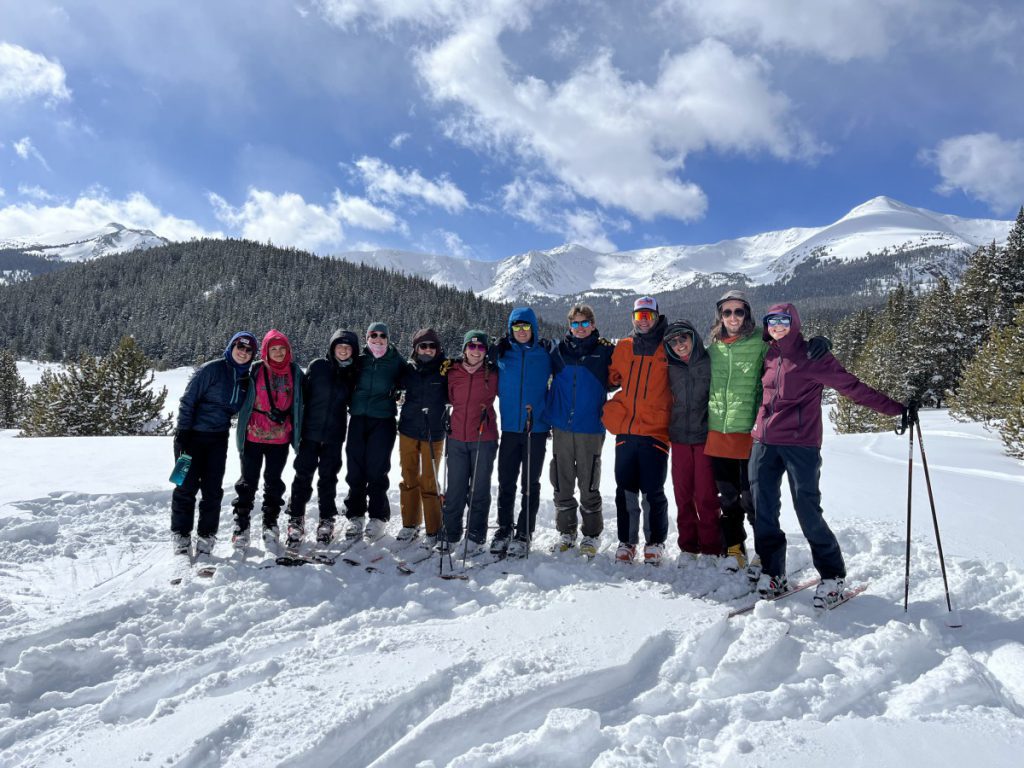
Group B: Second Expedition was both the most amazing and the most challenging thing I have ever done. For the first few days, we skied up and down hills with our backpacks and sleds, slept in tents, and made delicious food. On this expedition, you need to eat a lot of food to stay warm, so we had appetizers before dinner (which were just as good as they sound). We made mozzarella sticks, egg rolls, dumplings, and so much more. After mounding (making big piles of snow while others stomped on the piles with their skis) and digging out our quigloos (our snow fort homes), we had our first real homes in the mountains, and although they were made out of snow, the quigloos were surprisingly warm. We stayed at the first quigloo site for a few days and enjoyed the scenery, and we went on some ski tours and played spike ball in the snow. We then went on to our second and last quigloo site, and along the way, we summited Mount Zion three times. Each time, our group stopped at the top to not only take in the views but also the surrealness of where we were and what we were doing. I made so many new connections with those in my expedition group and got to know everyone, including the instructor team, in a whole new way. We quickly learned that we all had to work together as a group to stay warm, support each other, and keep spirits high. I will forever remember this expedition and the many things I learned about myself, my expedition group, and my surroundings throughout the ten days.
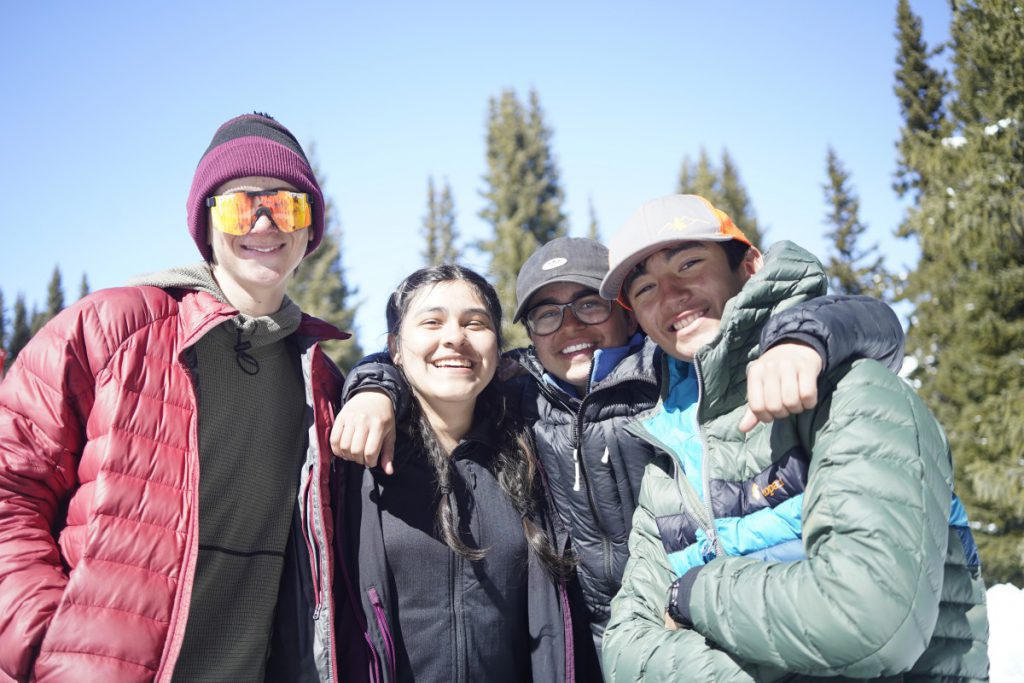
Group C: Our Second Expedition was chaotic, but nonetheless, it was also the best time of our lives. Through the trees and over mountains, we were led by our expedition leader, the wonderful Emma Wood. Everyday we would slap skins on the bottom of our skis and trek uphill, followed by a sled and wearing our backpacks. On our first full day, we had to say goodbye to one of our beloved expedition members because of a mild knee injury. Three students helped pull her out of the backcountry on a sled so that she could rest. On the following days, our group skied, mounded, dug out quigloos, and cooked food in the coldest of temperatures. Finally, the sun came out and thawed us! We hung out, did school work in the snow, skied up and down mountains, and made ski jumps. The 14th of March was unanimously our favorite day. We had a birthday in our group (and a birthday cake), but more importantly, we summited Mt. Zion. At the top, we could see the entirety of the Mosquito and Sawatch Ranges. On the way down the mountain, we flew through the powdery snow and jumped over jumps. Our whole group really enjoyed our trip.
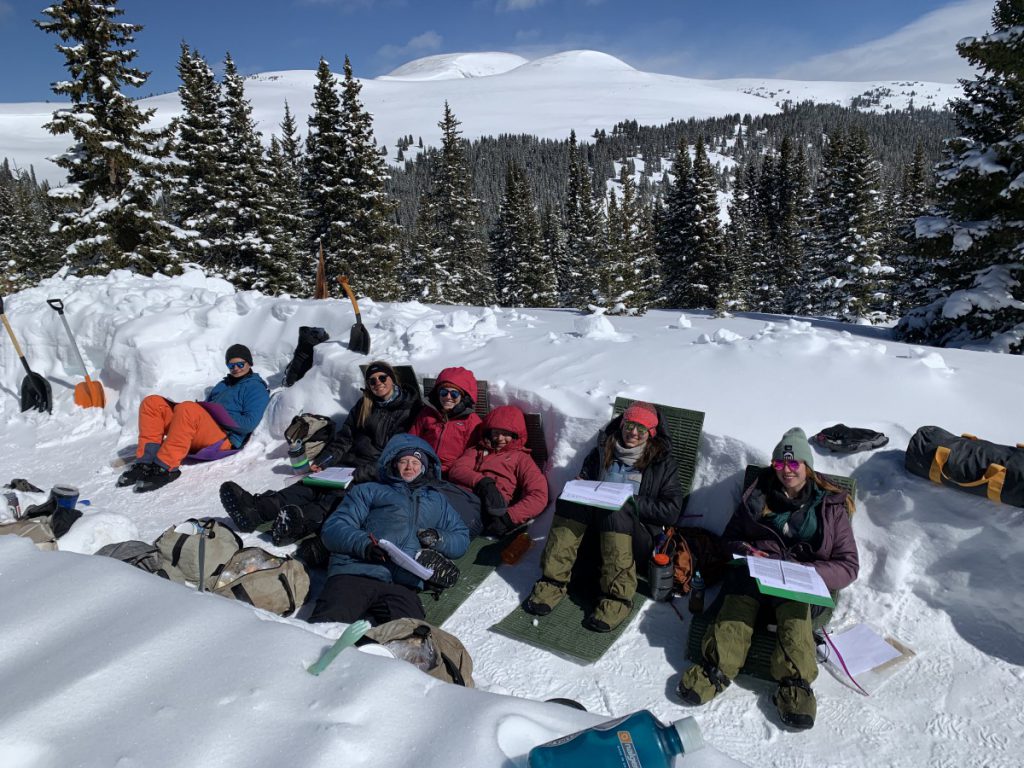
Group D: Our Second Expedition of the semester was a 10 day ski trip in the Sawatch mountains near campus. On our first day, the sun was out, and it didn’t feel like we were going to be spending over a week out there. When the first night came, however, it got real pretty quick. We pulled our sleds up to the first campsite, set up our tarps, and carved out a nice kitchen in the snow for the whole group. For me, that first night was all about figuring everything out and getting used to being in the cold. The next two days were spent making our first quigloos. We spent hours carving out the huge pile of snow and as a result, we got to sleep warm despite the temperature being far below zero. With our first quigloo done, we got to kick back for the first time and enjoy what the mountains had to offer. We did some skiing on a hill that was close to our campsite, and we got to break out our beach clothes for the first time (we wore many a Hawaiian shirt). Soon enough, though, we headed out again to build our second quigloos. This is when we got to show our architectural expertise and get fancy with the quigloo designs. At this next site, we also got to relax for a day before we set out to summit a mountain. During this rest day, we had a nice white sand beach celebration, which included some amazing kool aid, sunbathing, and skiing around. We then got to have an amazing ski/hike up Homestake Peak. At the top, the views were seemingly endless. After one more day of relaxing around camp, we had a nice early morning wake up, and we skied out to conclude the trip and to reunite with all of the different groups back on campus.
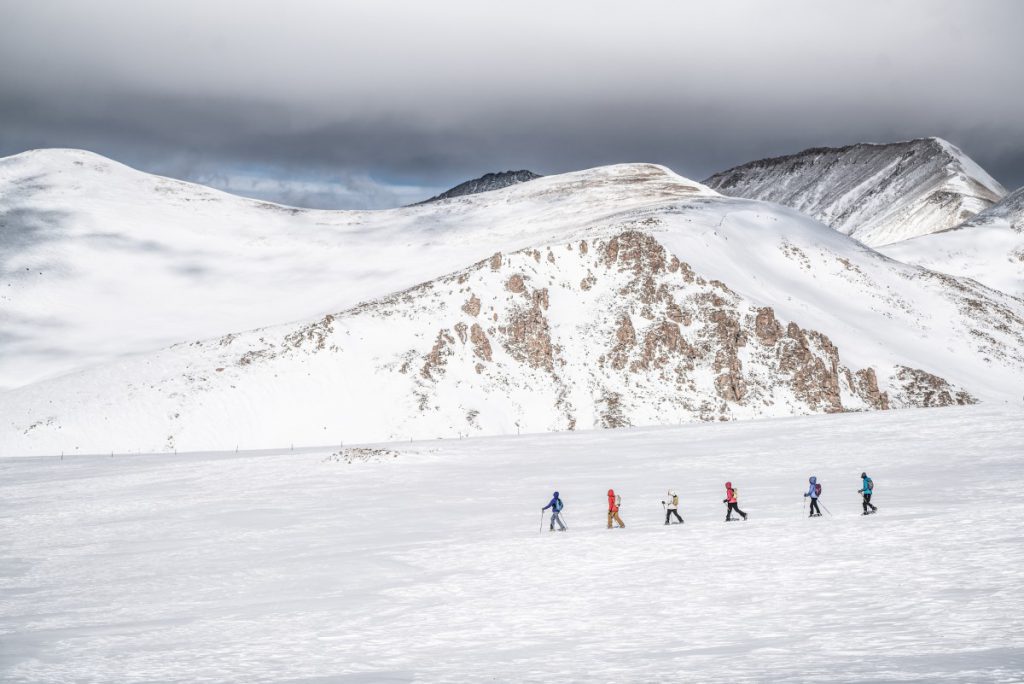
Group E: Last week, five groups returned from their Second Expedition in the mountains surrounding Leadville and HMI. Groups dispersed throughout the Sawatch and Mosquito ranges for ten days of living and learning in the mountains. My group was made up of nine students and three adults, and we camped in the area around Horseshoe Mountain in the Mosquitos. Our first camp was about two miles from the closest road and nestled in a grove of trees just below treeline. We spent two days making quigloos (quinzee/igloos), which are snow caves that we sleep and live in. We spent the first day making four seven-foot-tall mounds of snow, and then we spent the next day digging, carving and scraping out our mounds to form the snow caves. Many of the quigloos were at least six to seven feet in diameter, and I am 5’6’’ and could stand up in them. In the quigloos, because of the insulating properties of snow, we were consistently sleeping in about 30 degree temperatures, which we came to understand as warm! In the backcountry, we had beautiful full moon rises and an incredible view of Leadville and Twin Lakes. Each night, we would say goodnight to Leadville as we looked over it from 12,000 feet. Each morning brought striking sunrises over the mountain tops and a full view of the La Plata mountains, Mt, Elbert, and Mt. Massive. Everyone on my expedition agreed that our view was one of the most incredible they had ever seen. Each day brought new challenges as we handled cold, high winds, strong sunlight, gear issues, fatigue, stove malfunctions and physical challenges. Our days were also so incredibly joyful. We ate wonderful backcountry cuisine, played games, listened to music, and laughed really hard. Our trip challenged each one of us uniquely, and we returned feeling strong, proud, competent and excited to share about our experience. Our reunion with the other groups was joyous, celebratory, and filled with so much love.
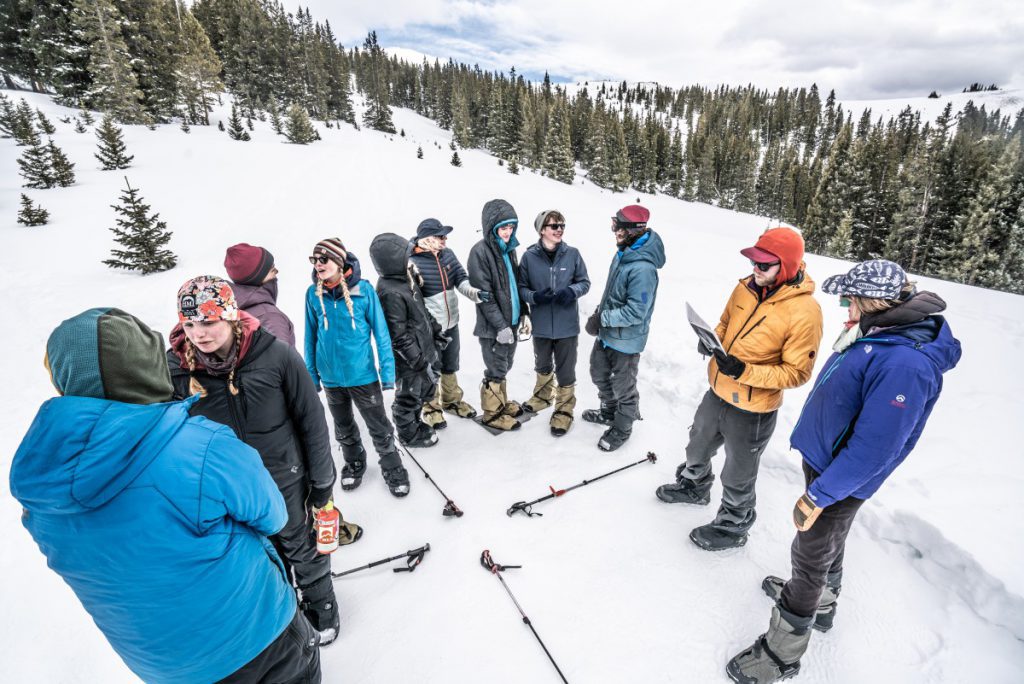


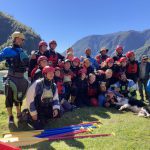 Gap: A magical week on the Futa River.
Gap: A magical week on the Futa River.
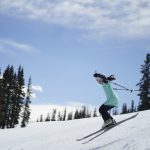 Semester 48: Cooking, Cabin Reps, Classes, & Cooper
Semester 48: Cooking, Cabin Reps, Classes, & Cooper